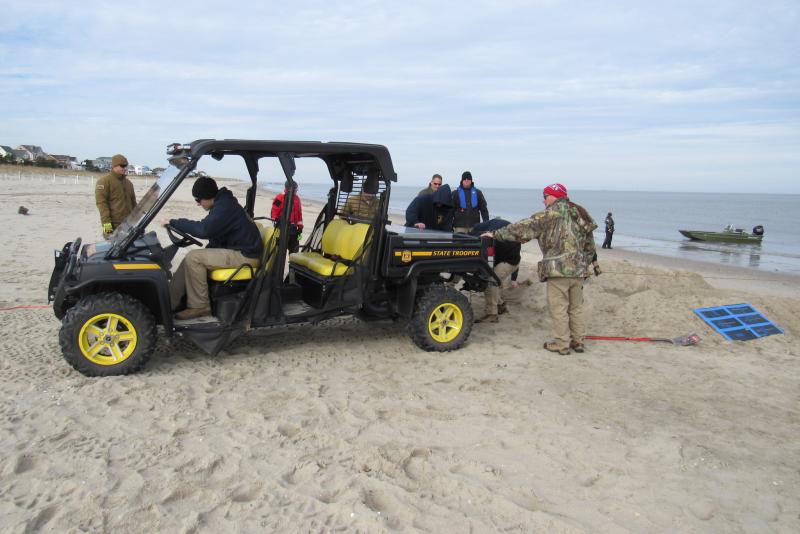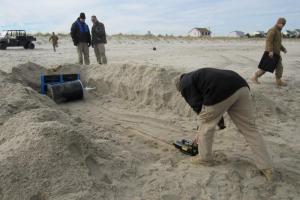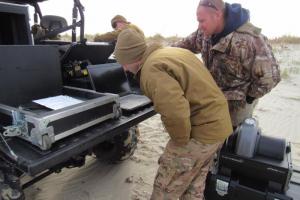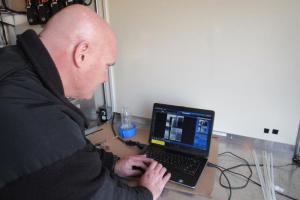Typically deserted this time of year, Beach Plum Island State Park hummed with activity Dec. 19 when an inert bomb was dragged onshore.
The small beach was the scene of a multi-agency counter-terrorism exercise, when FBI agents placed the inert device in the bay to be recovered and investigated by Delaware State Police Explosive Ordnance Disposal Unit.
FBI Bomb Technician Brian Hayes said he designed the device, a barrel within a 30-gallon barrel, for bomb technicians to x-ray and determine how to render it safe.
“I made it buoyant enough to float and loaded it with fake explosives,” he said. “It’s possibly a bulk explosive; they’ll find out.”
Delaware State Police Sgt. Brett Cordrey said the idea for the exercise was based on an inert mine discovered several years ago.
“In 2017, a World War II underwater mine the size of a 55-gallon drum was found in Cape Henlopen State Park,” he said. “It was a naval mine larger than a hot-water heater.”
The premise for the exercise involved an underwater mine that exploded and damaged a vessel navigating Delaware Bay’s shipping lanes. Upon investigation by Delaware State Police Maritime and Scuba Units, a second, unexploded mine was found attached to a buoy, partially submerged.
Cordrey said bomb technicians dug a big hole in the sand before dragging the bomb to shore.
“That way, if it goes off, fragments will be captured and the blast will be deflected up,” Cordrey said.
EOD Team Commander Sgt. Chris Ennis said technicians take X-rays to look for batteries, circuit boards and other components to determine how the device works. Then, they devise a plan to render it safe.
“Depending on the type of components and explosives used, bombs must be rendered safe differently,” Ennis said. “Looking at these X-rays, we’re not dealing with an everyday bomb maker. It’s more sophisticated.”
Technicians determined the device had multiple triggers, so they needed to attack different areas of the device simultaneously. After moving behind the dunes and shouting “Fire in the hole,” technicians used technology to remotely attack the inert device, rendering it safe. A waterproof LED light attached to the device, used only to determine if the device goes off, was not lit. The plan of attack worked.
Cordrey said technicians undergo hundreds of hours of training each year and must be recertified by the FBI every three years.
“Every public safety bomb tech is certified at the FBI Hazardous Devices School in Huntsville, Ala.,” Cordrey said. “There, they are trained in the same way so they can operate together no matter where they are in the country.”
As team commander, Ennis is the only full-time officer dedicated to the unit; 10 other part-time bomb technicians serve in other police functions and are called to duty when needed, Cordrey said.
In addition to bomb and ordnance disposal, the EOD Unit assists with drug and weapons investigations, provides counter-terrorism security during large events, makes explosive entries into fortified structures so SWAT teams can advance, and conducts two-way communication and video surveillance during hostage or barricade incidents.
Delaware State Police EOD Unit, Delaware State Police Maritime and Scuba Units, Delaware Department of Natural Resources and Environmental Control, Delaware National Guard EOD Team, Maryland State Police and the FBI participated in the exercise.























































